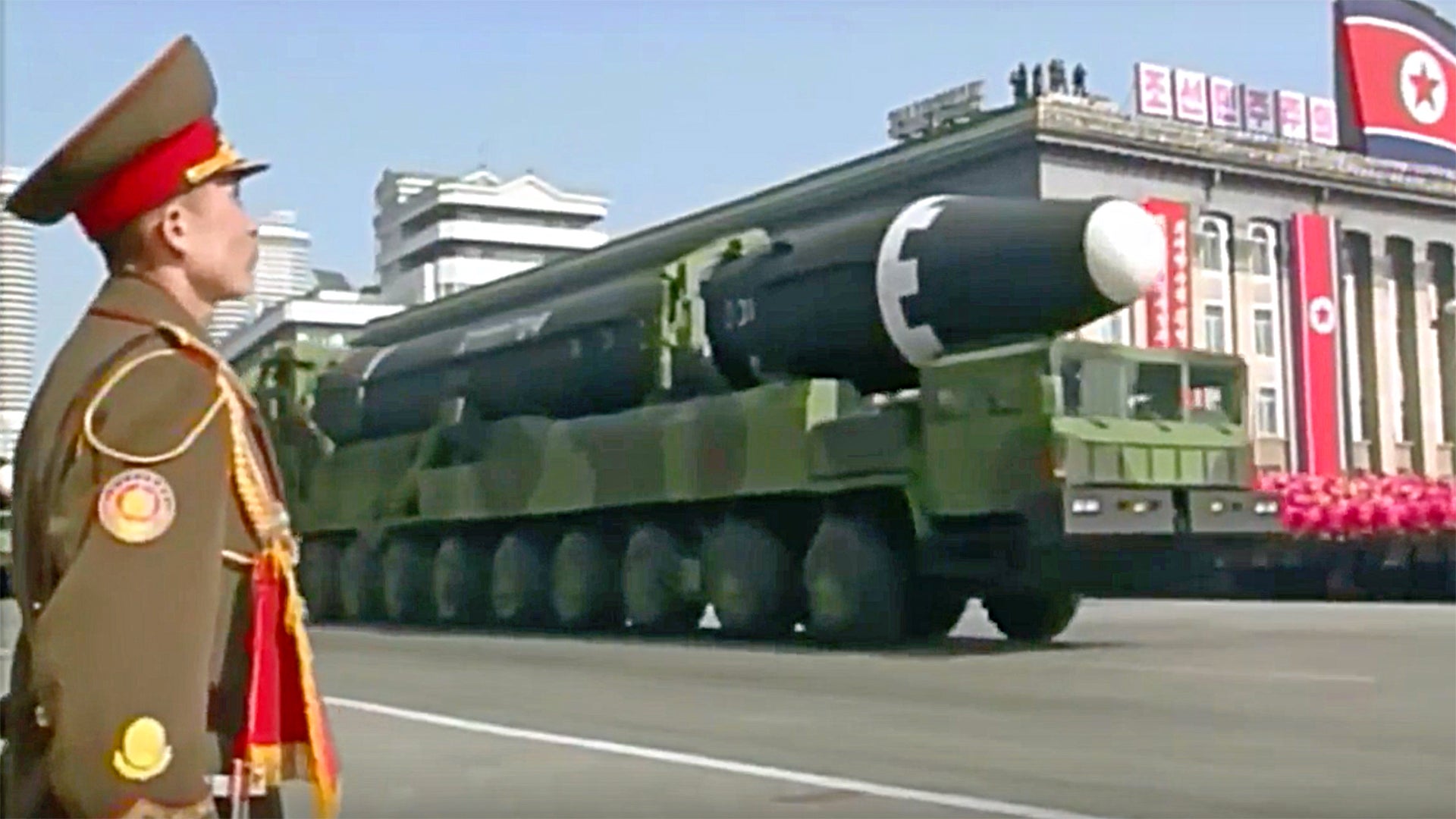What an interesting day it has been for those who monitor North Korean military and regime activities closely. Pyongyang’s grand military review through Kim Il Sung Square, which came to us last year via heavy on-site international news coverage that broadcasted it live and in high detail, turned into a shell game of sorts this year.
As many in the United States waited for the show to begin last evening, what they didn’t know is the parade had in fact already occurred many hours earlier, with the regime controlling all media from the exhibition with an iron fist. If anything else the ruse was a testament to—and a reminder of—just how wily the regime can be when it wants to and how closed off the country really is from the outside world.
In the end the broadcast didn’t air until around midnight Pacific Standard Time, but at least it aired at all. The game of media cat-and-mouse really isn’t that surprising considering just how tense things have become between Washington and Pyongyang. The notoriously paranoid regime surely thinks that massing tens of thousands of soldiers, hundreds of pieces of military equipment, and nearly all of the regime’s top leadership, including Kim Jong Un, in one place at one time is a major risk. A little unpredictability goes a long way, even if American and South Korea intelligence were likely well aware of the strange scheduling feint in real time.

Taping the event and broadcasting it hours later also provided a hedge against showcasing potentially embarrassing issues, like vehicle breakdowns and other mishaps in the parade program. It is too early to tell if any creative editing was done to make the parade of weapons and troops look larger than it was, but major changes seem unlikely because the parade was clearly smaller than the ones in year’s past, and especially in comparison to the one a year ago. But that doesn’t mean the heavy weapons that everyone was most interested in seeing didn’t materialize.
Considering the blistering sanctions that North Korea is currently under, which has dramatically impacted the country’s fuel reserves, the fact that they had a parade at all is impressive. And although this one was smaller, it still included all the usual elements and a few notable new ones as well. But once the truncated parade of tactical weaponry had largely passed the review stand, the lineup went right into large ballistic missiles, and this time there wasn’t any need to guess as to what we were seeing.
For the first time ever, every big missile shown has been flown and validated to some degree. And yes, the largest of Kim Jong Un’s weapons, the first intercontinental ballistic missile ever fired by the country, the Hwasong-14 (HS-14) was on full display, as was its menacing bigger brother, the Hwasong-15 (HS-15).
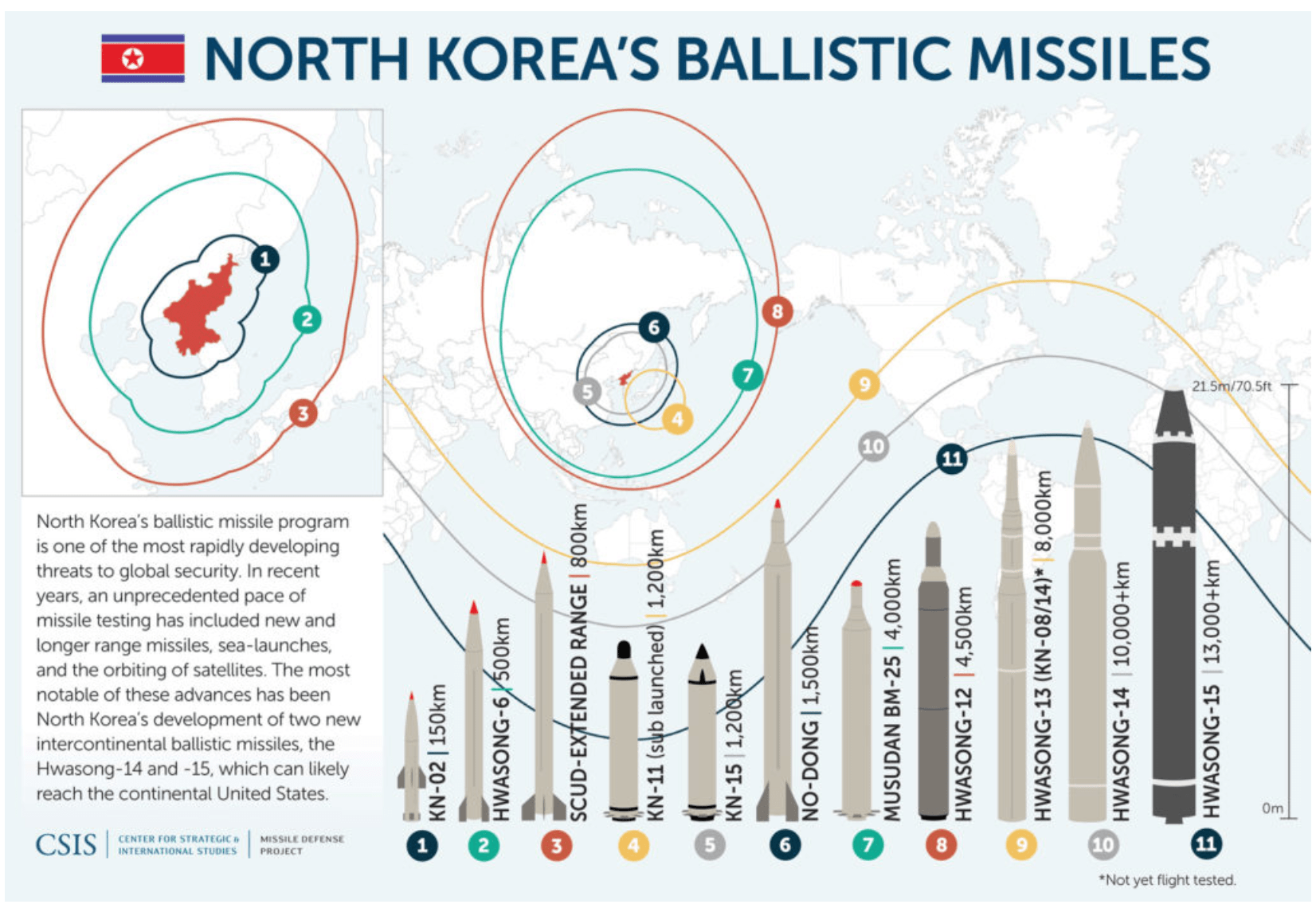
So without further ado, here are the main takeaways from the parade, at least at first glance. Additional intriguing elements may come to light in the near future, but this roundup will provide the highlights and some very important conclusions. Here is last year’s analysis which proved to be eerily accurate. You can compare it to this years and see that although not a ton has changed, strategically it’s a whole new ballgame.
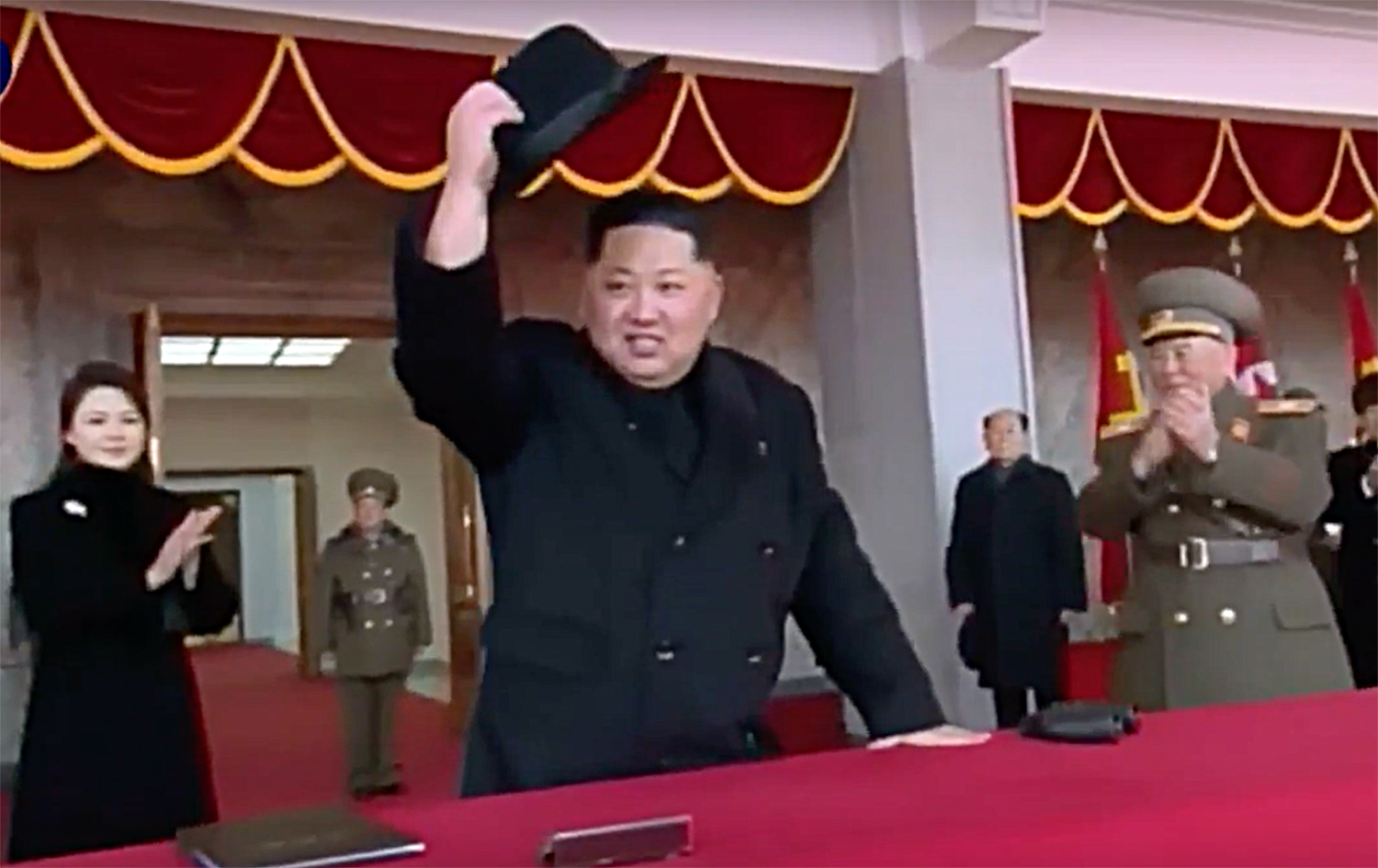
Kim Jong Un, wearing all black with his signature fedora, was the center of attention as always. He gave a brief speech and then took in the display with his regime henchmen by his side. His wife Lee Seol-ju was also in attendance, which is a fairly rare occurrence for an event like this.
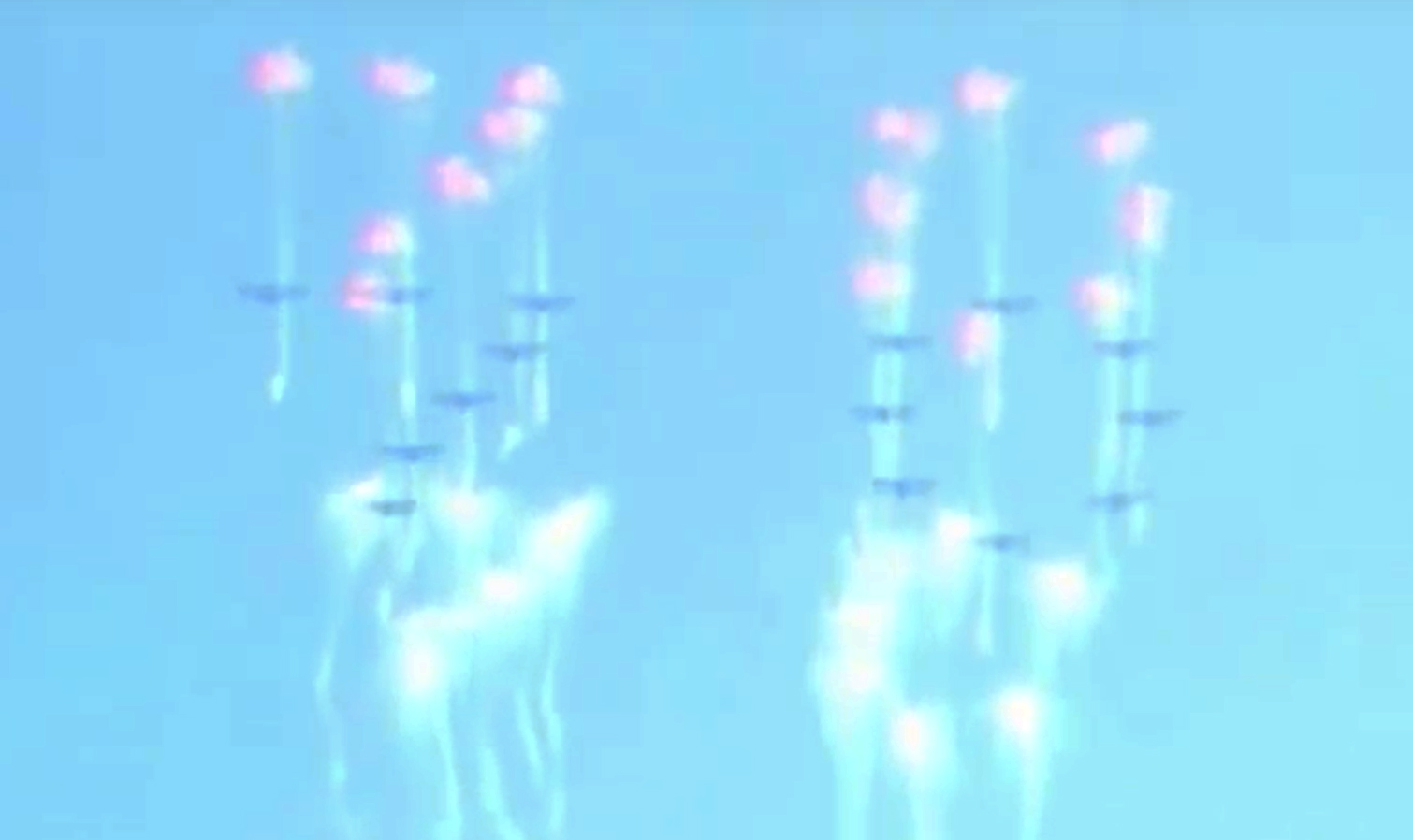
After the normal military parade ground pomp and circumstance, a formation of AN-2 biplanes—a seemingly innocuous aircraft that is actually a key weapon in North Korea’s arsenal—made a fairly impressive flyover. The formation spelled out “70” and coordinated flare releases looked very nice, which also spelled 70 one after another. The picture doesn’t do it justice, it looked very well done. This year marks the 70th anniversary of the founding of the party and the North Korean nation as we know it today. Later on a formation of Su-25 ground attack jets also did a large fan-break over the parade ground. Once again, for a country supposedly suffocating from fuel shortages, this was surprising.

The Chuch’e-Po self-propelled artillery pieces had an interesting secondary weapons turret up top, it almost looks like a remote system. Also note the twin MANPADS attached to that turret. This was even more common than last year, with many of the armored vehicles having MANPADS attached in one way or another. Clearly the North Korean military is preparing to rebuff South Korean and American battlefield interdiction platforms, like the A-10 Warthog, AH-64 Apache, AH-1 Cobra, and other low-flying armed scout and attack helicopters, using highly decentralized air defense tactics. This makes a lot of sense because North Korea’s air defense system would not survive the first weeks, or even days, of a major air campaign.
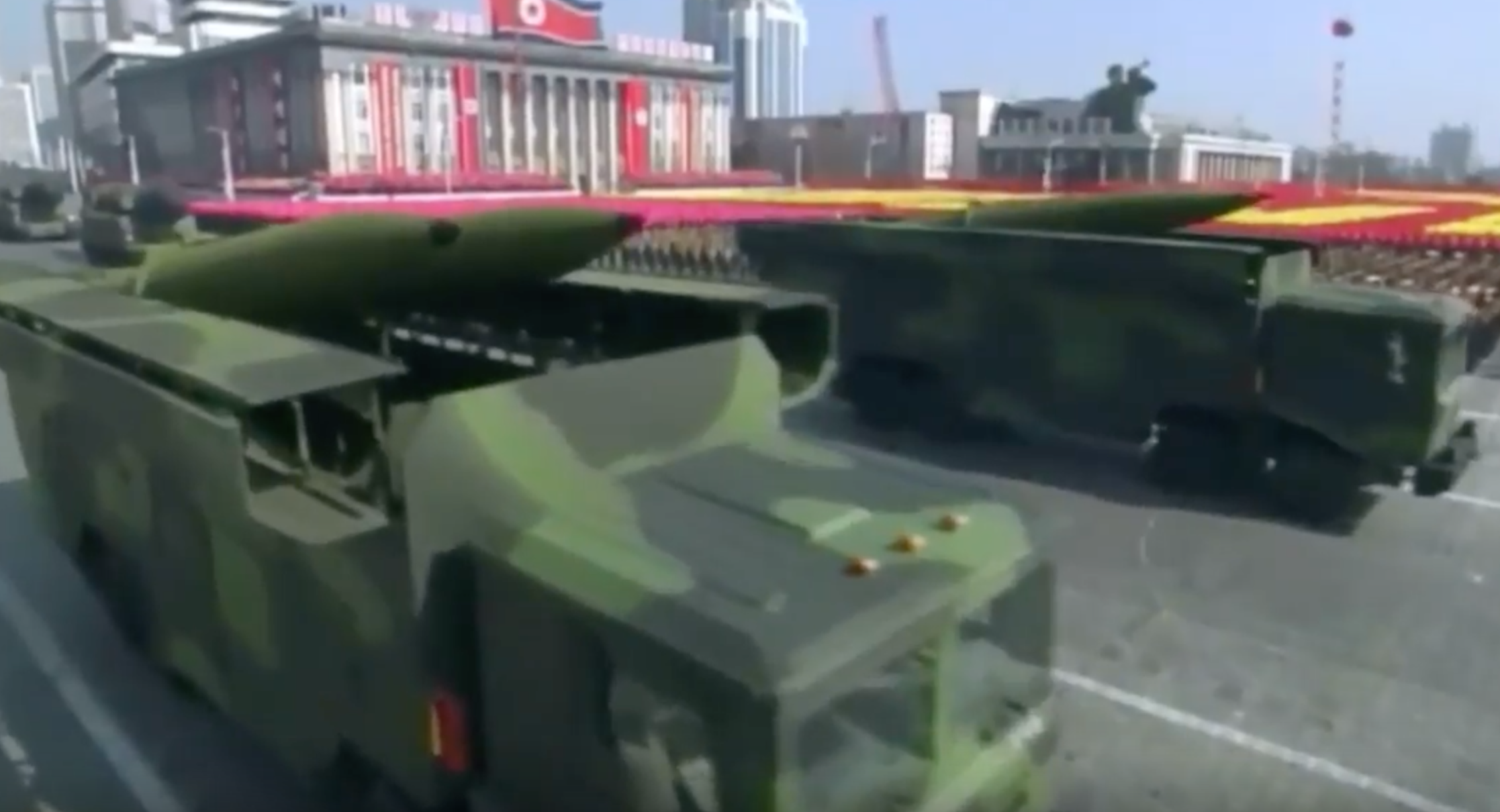
These vehicles and their missiles were interesting. They look like KN-02 short-range ballistic missiles, or an evolution of that system, but mounted two per vehicle instead of one. The carriage layout is similar to that of Russia’s Iskander tactical ballistic missile system. These smaller missiles don’t get the same hype as their larger cousins, but they will be the ones that rain down en masse on South Korea during a conflict, and will be used to strike targets beyond the range of North Korea’s traditional artillery and multiple-launch rocket systems arrayed along the DMZ. With this in mind, this could be a new system altogether which would be a troubling development.
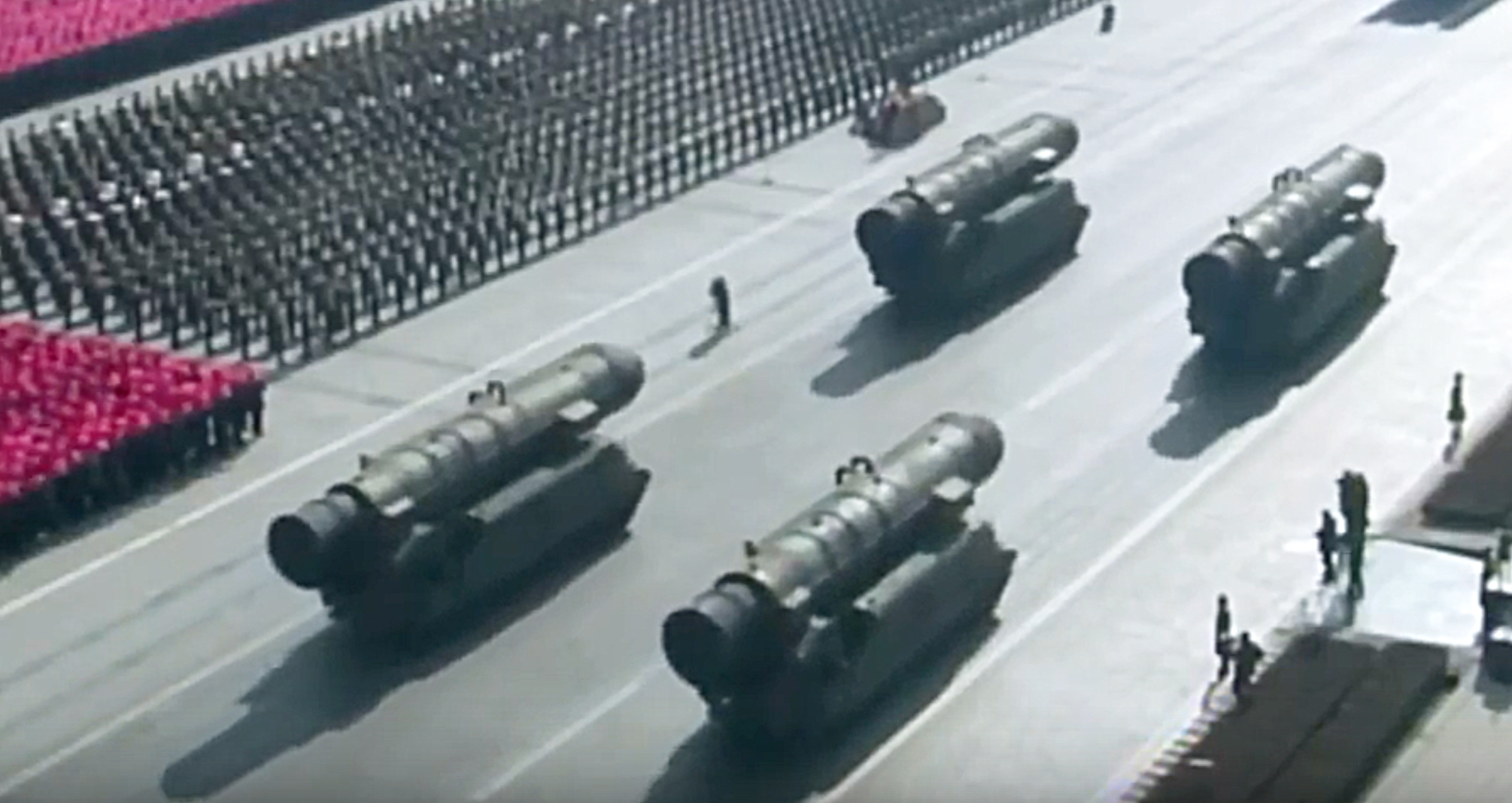
We know what the quartet of transporter-erector-launchers (TELs) shown above are meant for, the KN-15 solid-fueled medium-range ballistic missile. Having been tested successfully, this is one of North Korea’s most menacing ballistic missiles because it could be launched far faster than its liquid fueled cousins. The missile also shares wide commonality with North Korea’s KN-11 “Polaris” submarine-launched ballistic missile system.
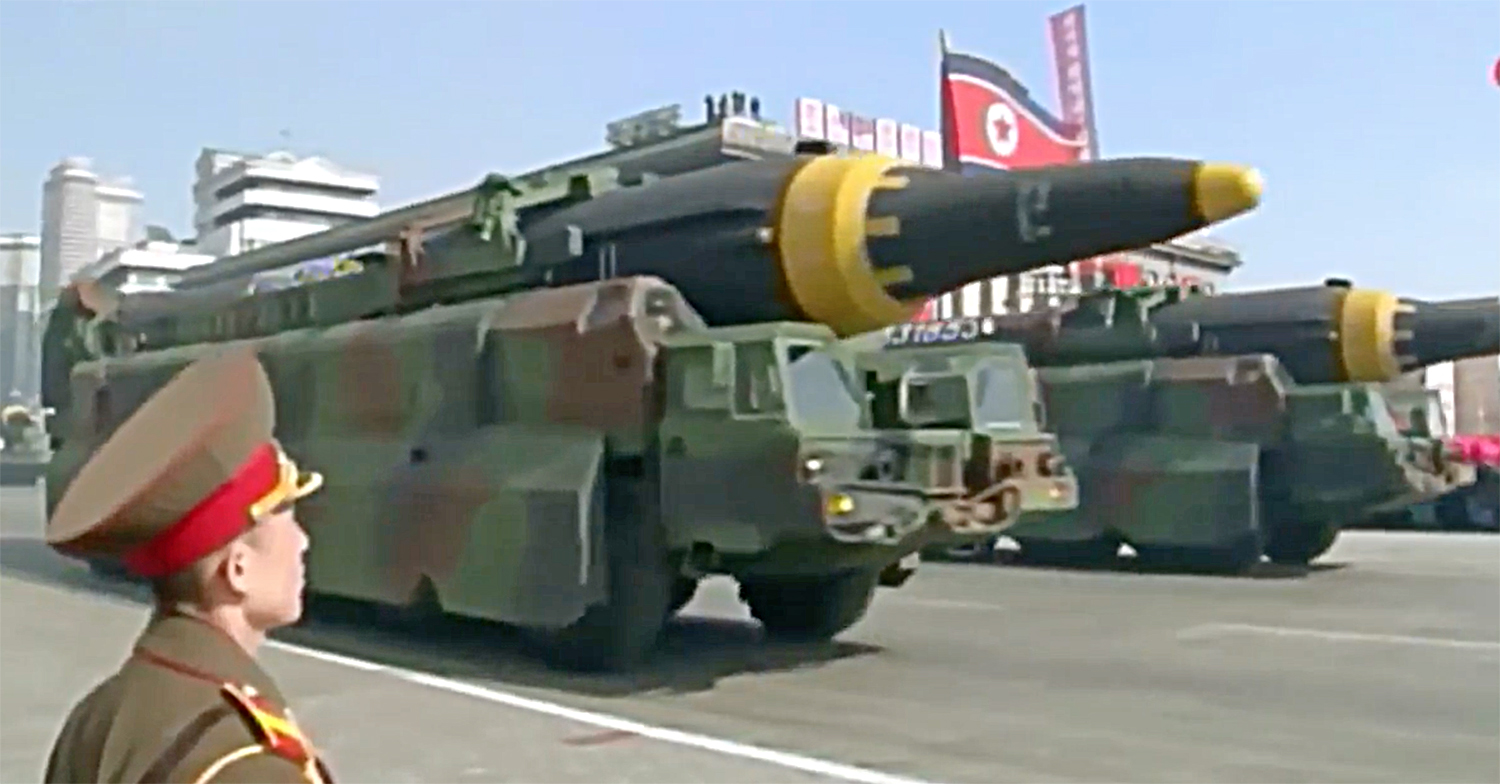
As usual, the missiles displayed grew in complexity and range as the parade moved forward. The next up was the HS-12, North Korea’s most proven upper-tier ballistic missile system in terms of range. This is the same intermediate-range missile that North Korea launched over Japan twice last year, and threatened to use in a show of force off Guam. The missile is an outgrowth of the BM-25 Musudan missile that preceded it. For regional players, no other missile is a more realistic threat than the HS-12 at this time.
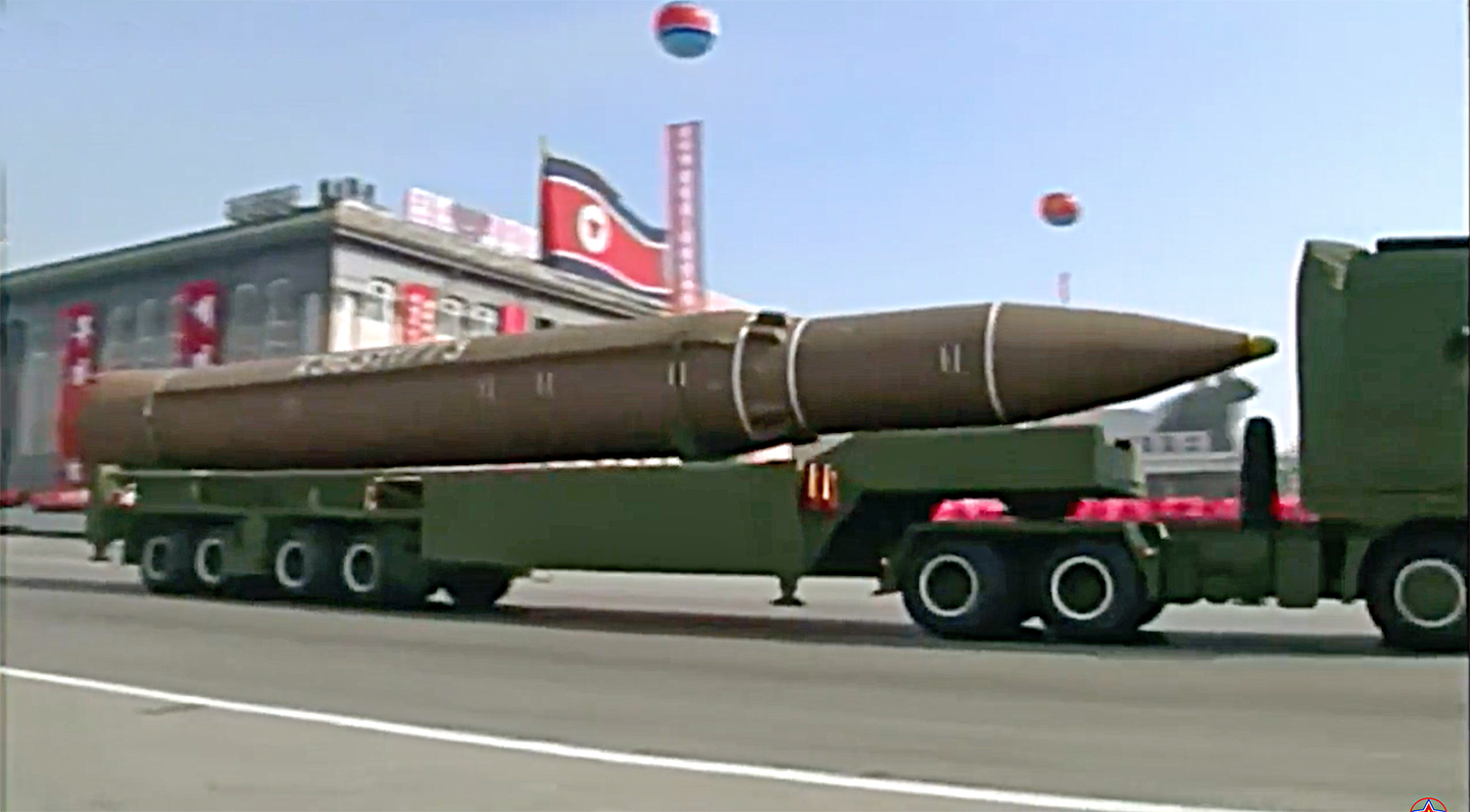
Now we are getting into the heaviest hardware, the intercontinental ballistic missiles (ICBMs). The HS-14, North Korea’s first ICBM that flew twice last July, made an appearance in the parade, but instead of being on a large TEL, the missiles were transported on the back of semi truck tractor-trailers.

Now to the finale, and the system most analysts were waiting to see, the massive HS-15. The ICBM was seen on its purpose-built nine axle TEL. There is no denying that the missile looked impressive as it was wheeled down the street, and it really does represent a new point in what has been a seemingly unbelievable arch in North Korean weapons development over the last two years.
You probably want to know how many of these big missiles were shown at one time. Roughly six of each ballistic missile system were included in the parade—not an encouraging reality to ponder I know. But quantity really isn’t the most important thing to take away from this whole spectacle. The fact that North Korea has gone from showing off “paper” and “model” long-range missile systems—from questionable missile designs that have never flown and just big empty canisters mounted on TELs—to real systems that have flown, and all of them quite successfully by now, is what’s most important. And this brings us full circle to this being a smaller parade, not to mention the changing utility of these types of events for the Kim regime going forward.
Fact: Kim Jong Un no longer has to scare us with hollow missiles riding atop trucks, he now has the real thing.
In the future—outside of what could happen in the coming months militarily between North Korea and the U.S. and its allies—these parades will be more heavily weighted towards domestic consumption than to spook and confuse foreign populations and intelligence analysts. Kim changed the game two years ago by doing what is father never did, embracing the missile testing process, including its embarrassing failures.
This was a phenomenon The War Zone pointed out and warned against early on in great detail. And when it comes to Kim’s missiles today—not to mention his nuclear program—the fact is the young tyrant has come through on nearly everything he bluntly said he would, and made intelligence agencies, politicians, and pundits look like fools in the process.
The big takeaway here should be: “Underestimate the North Koreans at your own peril.”
Sure the rhetoric is laughable at times, but this guy has played his missile and nuclear programs and ambitions incredibly straight to the world—including to his enemies. With this in mind, going forward we are far more likely to first see a new missile design on a launch pad than being paraded around Kim Il Sung Square in late Winter or early Spring. In other words, those big canisters riding on TELs for which North Korea had painted its dastardly hopes and dreams for so long are no longer needed, and that is a very scary thought indeed.
It’s also worth noting that the four core missile systems shown during yesterday’s parade are likely the pared-down inventory that North Korea will continue to evolve and validate in the future. Instead of a new missile seemingly popping up every couple of months, development efforts will become more focused and refined on the systems that have already flown.
The next big step for Kim’s missile programs will be to adapt the country’s budding solid fuel technology and advanced airframe design to larger missiles systems, which will be key in fielding a more credible and robust nuclear deterrent. This could happen in stages—literally—where existing liquid-fueled designs are upgraded with a single solid stage.
One strange thing that stood out from the parade was the fact that there was no sign of a submarine-launched ballistic missile. We know that Pyongyang is moving ahead rapidly in an attempt to further develop that capability and field it in an operational form. This will be something to keep an eye out for in the months to come.
That is if the military status quo lasts that long on the Korean Peninsula. There are concerning signs that point to the possibility of a limited strike by the U.S. on North Korea’s nuclear and missile programs following the Olympics. This will probably be predicated on Kim’s own actions. If he and his villainous crew continue with high-profile tests of their long-range missile and nuclear systems, a rapid American military response is becoming increasingly likely.
But regardless of potential conflicts to come, it is absolutely mind blowing what North Korea has accomplished in terms of its missile capabilities in just 24 months, and yesterday’s parade was excruciating evidence of this inconvenient reality.
Contact the author: Tyler@thedrive.com
